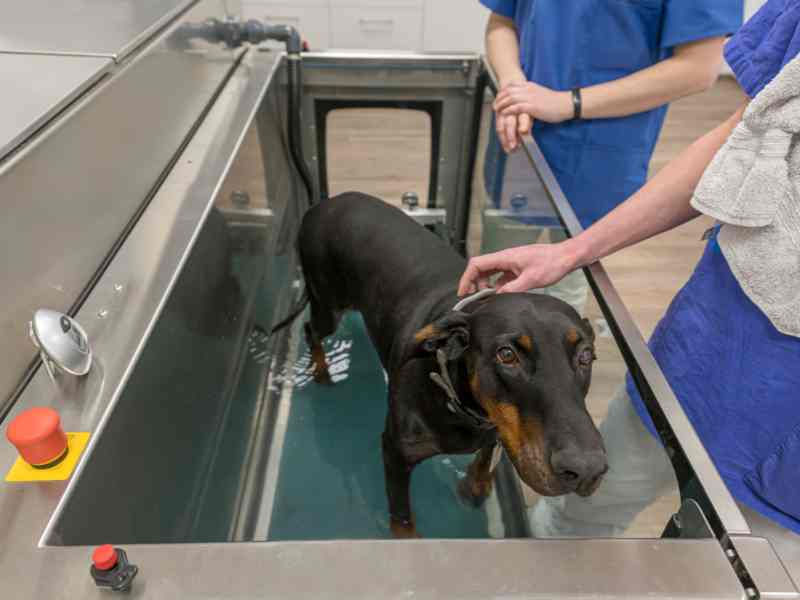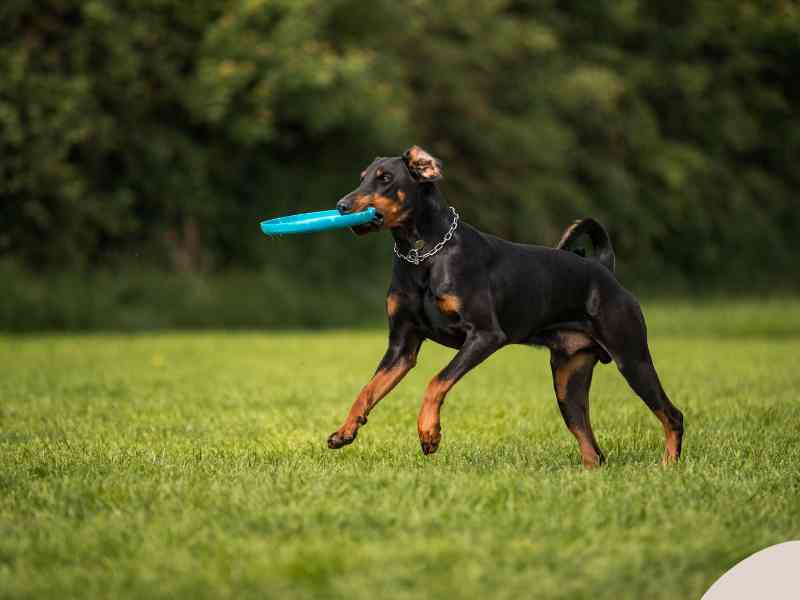When it comes to our dogs, a healthy spine means a happy life full of their favorites–fetching, running, and playing. But when dog spinal issues strike, they can really put a damper on your pup’s pep. That’s why it’s super important to keep an eye out for any early signs that your dog might be having a tough time. Catching these early can help your dog stay active and comfortable in their mobility.
Understanding The Dog Spine
The canine spine is a complex structure that plays an important role in your dog’s mobility and overall health. It’s made up of bones called vertebrae, and between each is a disc that provides cushioning. The spine does more than just support your dog’s body; it is also the home of their spinal cord, which transmits messages between the brain and the body. When your dog’s spinal cord is in great shape and healthy, overall health and happiness are better. On the flip side, when dogs suffer from issues with their spinal cord or spinal nerves, they’re likely going to have health problems overall, and their quality of life can be affected.
Common Spinal Cord And Disc Disease Issues In Dogs
Just like humans, dogs can suffer from various spinal issues that can impact their ability to move freely. Intervertebral disc disease (IVDD) is a condition that can cause disc herniation, leading to pain, possible paralysis, and other neurological symptoms. Other dog spine conditions include degenerative myelopathy, a progressive spinal cord disease, and spondylosis, which involves the formation of bony spurs along the spine and is more common in older dogs.
Symptoms Of Spinal Issues Dogs May Suffer With
Recognizing early signs of spinal problems in your dog is essential. Symptoms of spinal injury, spinal cord disorders, or other disc disease can include pain, difficulty moving, changes in their gait (how they walk), reluctance to jump or climb, and in more severe cases, paralysis. Early prevention, detection, and treatments are key for the best possible mobility and overall health outcome.
When your dog is struggling with spinal cord issues or disc degeneration, they’re likely in pain and that affects everything they do–especially their outlook. When we’re struggling, we’re not in the best frames of mind and that can be said for our best friends too. Spinal pain doesn’t just physically affect them, but mentally as well, and physical therapy, supplementation, and good, old-fashioned TLC can go a long way for their desire toward a happy and active life.
How To Keep Your Dog’s Spine Health In Shape
When it comes to keeping your dog’s spine the healthiest it can be, there are several things we pet parents can do.
Regular Exercise: Regular exercise is not just about shedding pounds or building muscle; regular exercise keeps your dog’s spine cord flexible and strong. Think of the benefits of yoga for humans–regular exercise for dogs is similar to what yoga does for their spine. The right amount of twists, turns, and stretches can keep their back in top-notch condition. Dog Exercise is about balance, though. Too much can strain their spine, and too little can make it stiff. So, a daily walk or fetch should be just as much a part of their routine as their afternoon nap.
Weight Management: While exercise goes a long way to keeping your dog’s spine nice and flexible, if they are a bit on the…fluffy side, it can be a problem. Every extra treat can weigh down on your dog’s spine. Veterinarians want you to keep your dog lean for the many health benefits for their internal body systems, but a healthy weight means less pressure on their back. You know how nice it is to take off a heavy backpack at the end of a long hike? It sort of feels like that on your dog’s spine when you help keep them at their optimal weight. A healthy weight equals a happy spine, which means more adventures together.
Dietary Considerations: When you build a house, you have to have the right materials. For a strong spine, your dog’s diet should be rich in the building blocks of good health. A diet that includes ingredients rich in omega-3s and vitamins is important because they support joint health and are like the secret ingredient for spinal integrity. Fueling them for everything they need to have the strongest, healthiest spine means you’re giving them the ability to live their best lives without spinal cord disc disease or spinal cord dysfunction.
Know your dog’s risk: All dogs benefit from proactive, preventative spinal care, but breeds with characteristically long spines are more prone to issues. Many dog DNA tests can also indicate risk.
Protect the spine/ avoid activities known to increase risk: Dachshunds should not ever be jumping off furniture or out of cars. Ramps can offer a gentle incline or decline, allowing dogs to navigate heights without experiencing the sudden impact that occurs with jumping. Using ramps instead of jumping allows dogs to descend from heights in a controlled manner, reducing the strain on their spine and minimizing the risk of further damage to the intervertebral discs.
What Happens If My Dog Has Spinal Cord Compression?
Thankfully, it’s not always a straight path to surgery when our dogs face spinal issues. There are plenty of non-surgical avenues we can explore to help them get back on their paws. Our Bernie is very familiar with acupuncture for dogs as well as dog chiropractic care – and with great success!
These holistic practices are all about restoring balance and promoting the body’s natural healing processes. With its strategic needle placements, acupuncture can help alleviate pain and improve nerve function. Canine chiropractic adjustments aim to get those misaligned vertebrae back in line, which can relieve pressure on the spine and nerves. Together, these complementary therapies offer a drug-free, surgery-free approach to spinal health in dogs, addressing both the symptoms and underlying causes of spinal issues. They’re all about getting to the root of the problem without going under the knife.
Veterinarians will also often recommend customized physical therapy programs for dogs as they can work wonders. By combining targeted exercises and therapies, we can help our dogs improve their strength, flexibility, and balance, supporting a healthy spine. Physical therapy rehabilitation might include underwater treadmills for low-impact exercise or specific movements to stretch and strengthen back muscles.
Combining modern veterinary practices with holistic wisdom means we can often offer dogs a shot at a surgery- and pain-free life that’s full of all the running, jumping, and belly rubs they love.
Can I Prevent Intervertebral Disc Disease In Dogs?
Unfortunately, you can’t really prevent IVDD in dogs, but there are many things you can do to keep your dog’s spine in the best shape it can be. That can go a long way in preventing and helping relieve the symptoms of several spine issues in dogs. Especially for those breeds of dogs who are prone to issues–Dachshunds, French Bulldogs, Pekingese, Pembroke Welsh Corgis, and Doberman Pinschers, to name a few. It’s all about creating a supportive environment that promotes their strength and healing if it’s necessary. That can be everything from comfy beds that cushion without too much sinking, raised food bowls to avoid neck strain, and rugs that prevent slip-and-slide incidents. Gentle, controlled exercise tailored to your dog’s condition, and supplementation created specifically to keep your dog’s joints healthy from the inside out.
Bernie’s Marvelous Mobility: Supplementation For Dog Spines And Mobility
We humans might sip on protein shakes full of vitamins and supplements to help boost our health, and we can offer our dogs similar benefits from the right supplements. There are lots of joint and mobility supplements on the market, and many of them use glucosamine and chondroitin to help with spine issues in dogs.
Having large breed dogs ourselves, we went looking to find the best ingredients that would support inflammation control and joint health for our dogs. We found that there wasn’t enough science to support those popular ingredients; instead, others had more and more current scientific backing.
For example, the omega-3 fatty acids in flaxseed and fish oils can help keep inflammation in check, while antioxidants like astaxanthin and vitamin C can guard against further cellular damage. And then there’s the power duo of undenatured type-II collagen and boron, working behind the scenes to maintain cartilage and bone health.
At Bernie’s Best, everything we do revolves around our desire to offer clean, holistic options that are science-backed and work to improve your dog’s overall health–from the inside out. Giving your dog Marvelous Mobility is an easy, delicious way to boost their mobility and vitality and keep their spine and every other bone and joint in great shape.
For us, it’s all about helping them live their best lives with less pain, and Marvelous Mobility is one way we do it.


